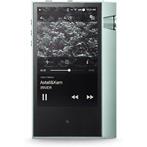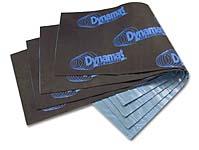Building your own blog doesn’t have to be complicated or expensive.
You can get started today by following my simple, easy-to-follow steps here at Build Your Own Blog. In just a few hours, you can start using a functional, quality blog that gets results for your business or whatever your blogging goals may be.
Build Your Own Blog is here for new bloggers as well as experienced blog owners who want to learn more about effective, results driven blogging.
My name is Matthew Loomis, and I’ve been blogging professionally and for fun since 2005. I put together this total blog building program so that more people can get out of the rat race and find meaningful work they love to do through their own high quality blog.
This is your opportunity to do the same. Or get left behind.
A blog can not only improve your business but also change your life.
Whether your motive is to make more money or simply to have fun, setting up an attractive, professional-looking blog that matches your goals and personality is quite simple these days.
What makes this guide different from the others?
You can find other websites like this one just by using a search engine. They are out there…
I took some time before launching this site to check out a large portion of other “blog success” type websites.
After studying the competition, I determined two key elements that were missing, and this missing information is what prompted me to start a website.
I made it my mission to reveal the missing pieces because without this critical info many people would continue wallowing in mediocre blogs.
Want to know what the two “missing pieces” are? Okay, let’s look at each one.
System vs. Content
While studying other “how to” blog sites out there, I noticed they’re commonly based on the same approach… Systems. Systems. And more systems.
Systems are fine. But without great content, a blog system isn’t going to do much to help you attract readers or clients in the long run.
My focus on high quality content as the key to blogging success is what separates this site from the herd.
This lack of information on content typically found on other blog sites creates a second unfortunate result for their users…
Providing Shallow Advice Instead of Deep
You see, most of the other sites out there end up being shallow—they get people started, but then abandon their students before they can build a level of momentum for their blog that’s sustainable.
In other words, most blog training websites stop educating their users after they launch their blogs. As a result, people get left treading water.
If I may use another swimming metaphor: People don’t learn how to swim in shallow water. They learn how to swim (growing stronger in the process) in the deep water.
Here at Build Your Own Blog you will get “deep water.”
Build Your Own Blog provides you with ongoing training after your blog is up.
Oh yeah, there’s one other thing to consider…
Why Pay?
The few other websites out there that can teach you how to blog charge a hefty price for their information. These sites typically want anywhere from $99 to about $250.
Why would you want to pay for advice that you can get free right here at no charge?
What types of blogs can you build with this guide?
There is a one word reason why most successful blogs are using the WordPress(i) platform—simplicity.
That’s why WordPress is the blog platform we recommend. Because of its ease-of-use for those not experienced in website development (probably 99.9% of bloggers), WordPress is the foundation of this guide.
Not only is WordPress simple, but it also has unmatched flexibility that enables you to create just about any type of blog design needed. There are literally thousands of looks to choose from. Say, for example, that you wanted to blog about your favorite soccer club, Australian politics and a third blog for your business. WordPress has a design that’s just right for each. (Putting the three topics together would not be a good idea. But that’s something I’ll talk about later in a blog article.)
And let’s suppose later on you need to change the look of your blog—the fact that you can change the appearance at any time, and do it cheaply, only makes my WordPress promoting that much easier.
Pretty sweet, don’t you think?
No Need to Fear
WordPress is something I am comfortable teaching to other people. If you are nervous about using it, I would be happy to help you get started.
I can relate to those scary feelings of the unknown. Before using WordPress, I was a bit worried at first, too.
When people do something new or different, a little coaching can really be helpful. I have seen blogs of all types succeed just by following the steps on this site—from Cooking, Fitness, Music, News Aggregation, Bobsledding, and the Meaning of Life, and many other topics.
The advice here is free—but I don’t recommend using a free blog service.
Why free blogs are bad for you?
There are several good reasons why you should avoid all the free blogging services you come across, including well known platforms like blogger.com and wordpress.com.
I want to include Google+ here also, as some are now using this social media platform as a blogging platform as well.
Here are the reasons why I don’t recommend doing this…
Reason I: You do not own the real estate your business sits on.
As a “renter,” your blog can be evicted (shut down) at any time by the “landlord” (free blog service.) This happens more than you might think. I know someone who lost two years of invested time, content and branding simply because their free blog host didn’t like something they said in a post.
Reason II: A hacker can steal your online business much easier.
I know a few entrepreneurs who lost significant amounts of money because someone was able to steal their password and keep them out of their own website for a long period of time. When you haven’t paid a blog provider for their product, this results in slow customer service when you need help restoring your blog. Sad, but true.
Reason III: You are not free to arrange your blog as you see fit.
There are lots of examples we could go over here. From choosing where your ads are placed to having a low amount of Bandwidth to incorporating your branding elements (like colors, fonts, and even size and location of your logo.) Restrictions will apply in many different areas with a free blog service.
Paying for a blog service is ridiculously inexpensive and an investment you can quickly recoup through your business. (We are talking within a matter of hours or even minutes, depending on the type of business.) Even if you are blogging for fun instead of for-profit, you will have more fun blogging by making a monthly investment equal to a typical Starbucks visit ($5 to $7 per month on average.)
You Can’t Lose with this Process
You will succeed as a blogger if you are willing to follow these simple instructions step-by-step.
I’ve been able to see people quit jobs they despise, start their own business through blogging and reap the rewards over time. This is a great feeling.
My goal is to help even more people learn how to build their own blog this next year. So don’t hesitate to message me if you have a question. To be honest, my web host gives me a small commission each time I help someone set up their blog. That way, we both get a return on our time investment. But it doesn’t come out of your pocket. So don’t be shy.
I’d love to hear from you.




































